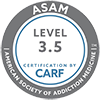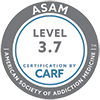Americans across the nation are dealing with a spike in the number of overdose-induced deaths. According to the CDC, we’ve seen a 16% increase from 2020 to 2021, and in 2021, over 75% of drug overdose deaths were linked to opioids. Illegal opioid, synthetic opioid, prescription opioid, and heroin-related deaths have all increased—with synthetic opioid death seeing the highest uptick.
To better understand the Fentanyl Crisis in Iowa, let’s look at the history of synthetic opioids, and fentanyl in particular.
What is Fentanyl?
Fentanyl is an FDA-approved, extremely potent synthetic opioid created for prescription pain relief purposes. Its effect is roughly 100 times stronger than morphine and 50 times stronger than heroin.
- The First Wave: Prescription Opioids
The CDC reports three waves of the opioid crisis, the first of which began brewing in the 1990s when opioids began to be more widely prescribed. Overdose deaths related to natural and semi-synthetic prescription opioids, as well as methadone, started to rise in 1999. While prescription opioids were designed for short-term use after surgery or during cancer treatment, doctors began to prescribe them more frequently for longer-term issues, like chronic back or joint pain. Concerns about prescription opioids and their safety were overshadowed by how effectively they worked to alleviate pain. Over-prescription, accompanied by poorly monitored administration, marked the origins of the opioid crisis. - The Second Wave: Heroin
In 2010, a rapid spike in overdose deaths linked to heroin marked an overt shift from prescription opioid use to the abuse of illicit substances. People who had become addicted to prescription opioids began to turn to heroin as a cheaper and more easily accessible alternative. In recent years, stricter border control has made it riskier to smuggle heroin into the U.S. Instead, drug traffickers have become much more reliant on the profitable sale of fentanyl, which, because it is so potent, is easier to move in small quantities. - The Third Wave: Fentanyl
As fentanyl began to permeate the illicit drug market, often being added to heroin or other drugs without the buyer’s knowledge, the number of overdose deaths began to skyrocket beginning in 2013. Understanding these waves offers a bit of insight into the progression of the fentanyl crisis, from its origins in prescription medications to the current dominance of synthetic opioids on the streets. - Withdrawal: Why It’s So Hard To Eradicate Fentanyl Addiction
At the heart of fentanyl recovery lies the crushing consequences of withdrawal. Unless opioid-addicted individuals continue to use the drug, they experience excruciating withdrawal symptoms that can kill them or lead them to consume lethal amounts of fentanyl out of desperation. The profound physical and psychological dependence often calls for buprenorphine and methadone interventions to safely transition from addiction to sobriety. Many rehabilitation centers across America aren’t equipped to effectively and safely monitor fentanyl withdrawal.
Navigating Relapse Risks with St. Gregory Recovery
Research underscores the critical role of consistent treatment in preventing a return to addiction. Isolation, stress, and social changes brought about by the pandemic can all make relapse more likely. If you or someone you know has become addicted to fentanyl or other opioids, St. Gregory Recovery Center can help. Scientifically informed detox treatment is our specialty. We can help our clients safely manage the physical and psychological pain of withdrawal, and our robust rehab program addresses holistic aspects of health. We also provide post-treatment outpatient care to ensure that you stay on the right path once you leave treatment.
Don’t feel guilty about your substance use disorder—or judgmental of those who face it. Substances like fentanyl are so powerful that addiction can happen quickly. The best solution is to contact St. Gregory Recovery Center as soon as possible. History may not be on your side, but we are. Step out of statistics and back into your own life today.







